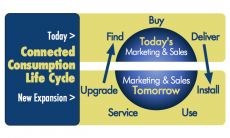You might begin to think differently about designing video content if you think about your viewers and what they want to learn from your B2B video content.
What is micro-learning?
Micro-learning is the instructional design strategy embraced by eLearning professionals to reach a workforce—younger employees in particular—who are distracted, stressed out, and disengaged. It’s said to be a “learner-centered” approach.
Micro-learning strives to achieve a specific “learning outcome”—marketers might call it the “takeaway”—by delivering a bite-sized nugget of learning content. The idea is that you can reduce cognitive overload and increase retention by chunking information.
Micro-learning course design
In eLearning, a “chunk” is five minutes or less. Many B2B videos meet that criterion. But there are several interesting principles of micro-learning course design that marketing video practices seem not to follow—and are worth considering. Here are six, as listed by the eLearning company, Swift.
An effective micro-learning course:
- Provides deeper learning on a specific concept or a performance objective
- Is bite-sized, effectively chunked and easily digestible
- Designed for exact moment-of-need—the right information at right time
- Ideal for extended performance support providing a better mobile learning experience
- Focuses on a single performance objective, concept, or idea
Micro-learning and video content: where is the focus?
Most B2B marketing content is built to answer a question: Why should I be interested in this product? The goal is to persuade the viewer to seek more information.
The video would look a lot different if we designed it to answer the question “How do I use this product?” and applied some of these micro-learning practices. A focus on “deeper learning,” for example, would rule out marketing-speak and empty assertions of superiority (“unprecedented productivity gains”). Instead of itemizing product features, benefits, and core messages, you would illustrate them in the course of teaching how a specific problem is solved using the product.
If you subscribe to the idea that your video content for marketing exists to help buyers learn, give them some micro-learning. Most buyers would prefer learning something useful to watching a commercial.







